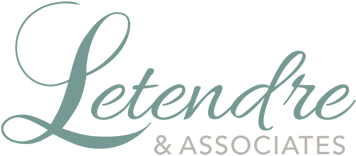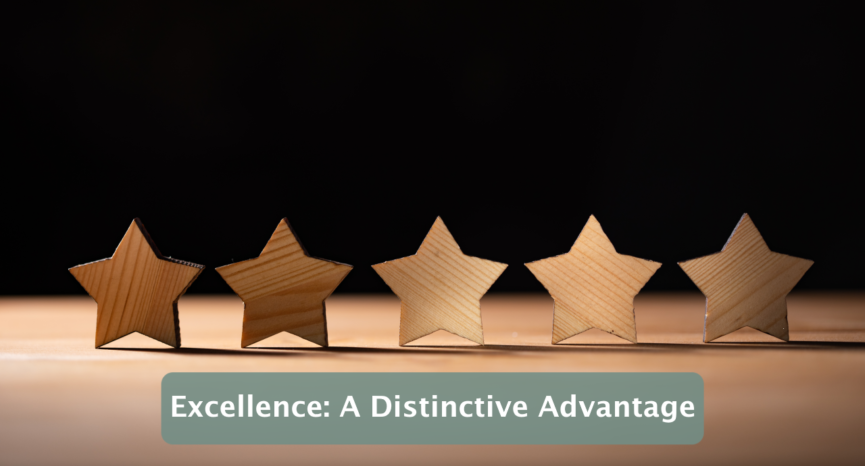Excellence: A Distinctive Advantage
When casually meeting folks for the first time, the conversation often turns to “what do you do?” There are so many paths that question could take. But if their interest seems to be in the realm of work, I typically say that “I work with organizations striving to be excellent.” In one form or fashion they reply “But aren’t all organizations?” That is when the conversation gets interesting.
In my couple of decades of working in “organizational excellence,” I can confidently say that No, not all organizations are in pursuit of excellence. Many are simply not willing to put in the hard work to become excellent. They want a quick fix. They want everything in the :15-minute Cliff Notes version.
Excellence requires deeper work than a brief synopsis.
I find that all too often these types of “quick fix” organizational leaders chase the latest thing: they jump from one thing to the next; they are narrowly focused on just a few results; they are not willing to rethink their management approaches; they are activity-focused; they have not created meaningful alignment within their organizations.
Organizational excellence requires much more:
- a long-view,
- a focus on results, but across all dimensions of organizational performance,
- process-based approaches,
- strategic-thinking,
- discipline and perseverance,
- the capability to improve, and
- the ever-present need to align (people, processes, plans, results),
to name a few.

Organizational excellence cannot be accomplished “by next year” … but, it is a worthwhile pursuit for organization’s who want to create a true distinctive advantage that will benefit their customers and communities for years to come.
While there is not one manner in which to move an organization forward toward organizational excellence (as that depends on their vision, specific goals and starting point), there is (thankfully) a near universal definition of organization excellence.
Here in the US, the Baldrige Excellence Framework has provided organizations across sectors with this definition of excellence via an excellence framework, a set of criteria, and an evaluation rubric.
“In the simplest terms, the Criteria have been defined as an “integrated management framework”—a tool for understanding and managing organizational performance. They are a set of questions that guide how to run any organization, no matter its sector or size.
The Criteria are divided into process and results categories that represent all of the components of a performance management system: leadership; strategy; customers; measurement, analysis, and knowledge management; workforce; operations; and results. They provide a systems perspective, meaning they look at alignment and integration across an organization.”
[note: Excellence frameworks in Europe (EFQM), Japan, Australia, Canada, and around the world contain similar concepts within their organizational performance excellence models, thereby creating a near universal definition of organizational excellence.]
It was the excellence framework of Baldrige that changed the trajectory of Rutland Regional where I was fortunate to co-lead the organizational transformation first-hand. And it certainly has guided my work in and with organizations ever since.
Most of my clients are not explicitly using the Baldrige excellence framework, but it is ever-present in my mind and work. I am continually observing and supporting organizations through the lens of organizational excellence:
How do their leaders lead?
What is their strategic direction? How do they align around that? How effectively do they implement?
Do they seek to understand their customers’ evolving needs? How do they develop new services, products, and offerings relative to these needs?
What do they measure? And how do they use metrics and analysis to guide actions and improvements?
How do they engage and support the workforce for high performance? How do they build an effective work environment?
What are their key work processes for serving their customers? How do they evaluate and improve these work processes?
Are they evaluating their management approaches and improving them?
What do their organizational results show?
Are they trending positively? Do they compare against others? How do they compare to the best in their region or best in the industry? Are they monitoring results in all key dimensions or just a few? Who is looking at the results and how frequently?
I am very fortunate to work with organizations and leaders who are interested in doing the deep work of organizational transformation. Not all are seeking organization excellence according to the definition described above. But it is truly remarkable what can be achieved in the pursuit of transformative goals.
Your customers, your staff, your communities will reap the benefits multifold.

If you’d like to receive these Inspirations in your inbox every other week, you can subscribe to Kathy’s Excellence Advantage Inspirations Newsletter.
Kathy Letendre, President and Founder of Letendre & Associates, advises organizations and leaders to create their excellence advantage.
Contact Kathy by phone or text at 802-779-4315 or via email.

